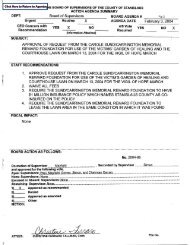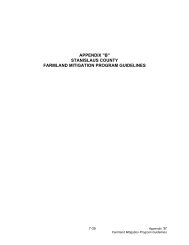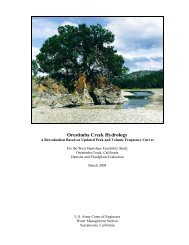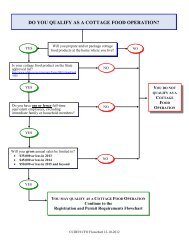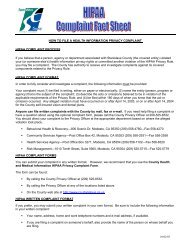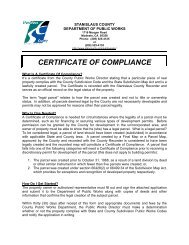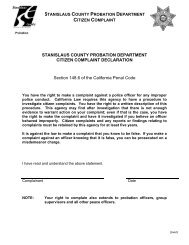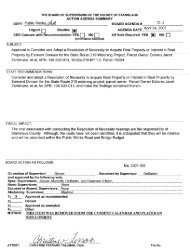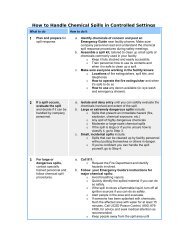Orestimba Creek Feasibility Study - Stanislaus County
Orestimba Creek Feasibility Study - Stanislaus County
Orestimba Creek Feasibility Study - Stanislaus County
Create successful ePaper yourself
Turn your PDF publications into a flip-book with our unique Google optimized e-Paper software.
Economics Appendix – Draft Report - <strong>Orestimba</strong> <strong>Creek</strong> <strong>Feasibility</strong> <strong>Study</strong>, <strong>Stanislaus</strong> <strong>County</strong>, California – September 2012<br />
In addition to damages estimates, HEC-FDA reports flood risk in terms of project performance.<br />
Three statistical measures are provided, in accordance with ER 1105-2-101, to describe<br />
performance risk in probabilistic terms. These include annual exceedance probability, long-term<br />
risk, and assurance by event.<br />
<br />
<br />
<br />
Annual exceedance probability measures the chance of having a damaging flood in any<br />
given year.<br />
Long-term risk provides the probability of having one or more damaging floods over a<br />
period of time.<br />
Assurance is the probability that a target stage will not be exceeded during the<br />
occurrence of a specified flood.<br />
Project performance for the Rural and Urban Impact areas were calculated in two different ways<br />
within HEC-FDA. The Rural project performance statistics are based upon the top of channel<br />
elevation at the first point that water leaves the creek during a flood event. For the Urban impact<br />
area a different methodology was used, instead basing project performance on the stage when<br />
damages reach 5% of the 1% event damages. The reason that the urban model did not use the<br />
top of channel methodology is because the town is miles away from the channel and the index<br />
point used is along the railroad where water first enters the urban impact area. Using the 5%<br />
residual damages for the 1% annual chance event seemed to give us reasonable results for AEP<br />
(15%) in the urban area as flooding begins between the 1/5 (20%) and the 1/10 (10%) annual<br />
chance event. Two different methods were used here, because the flooding patterns are different.<br />
Table 5-7 is attempting to communicate the existing flooding problem and how it differs between<br />
impact areas.<br />
Economic<br />
Impact<br />
Area<br />
Annual Exceedance<br />
Probability<br />
Median<br />
Table 5-7: Project Performance by EIA<br />
Without Project Conditions<br />
Expected<br />
Long-Term Risk<br />
10<br />
Year<br />
Period<br />
30<br />
Year<br />
Period<br />
50<br />
Year<br />
Period<br />
Assurance by Events<br />
10% 2% 1% 0.20%<br />
Rural 24% 24% 94% 99% 99% 6% 2% 1% 1%<br />
Urban 14% 15% 81% 98% 99% 13% 0% 0% 0%<br />
30




